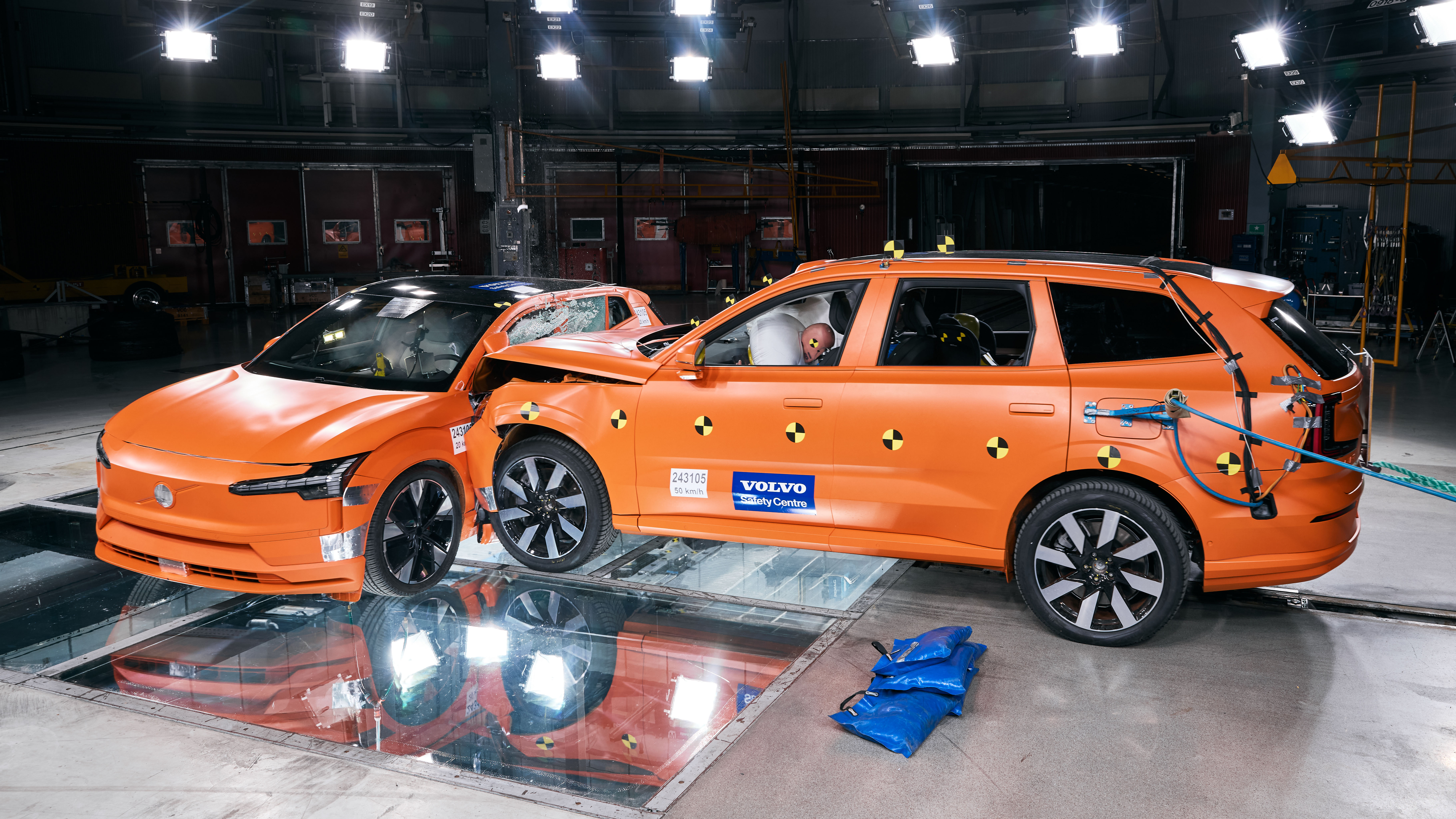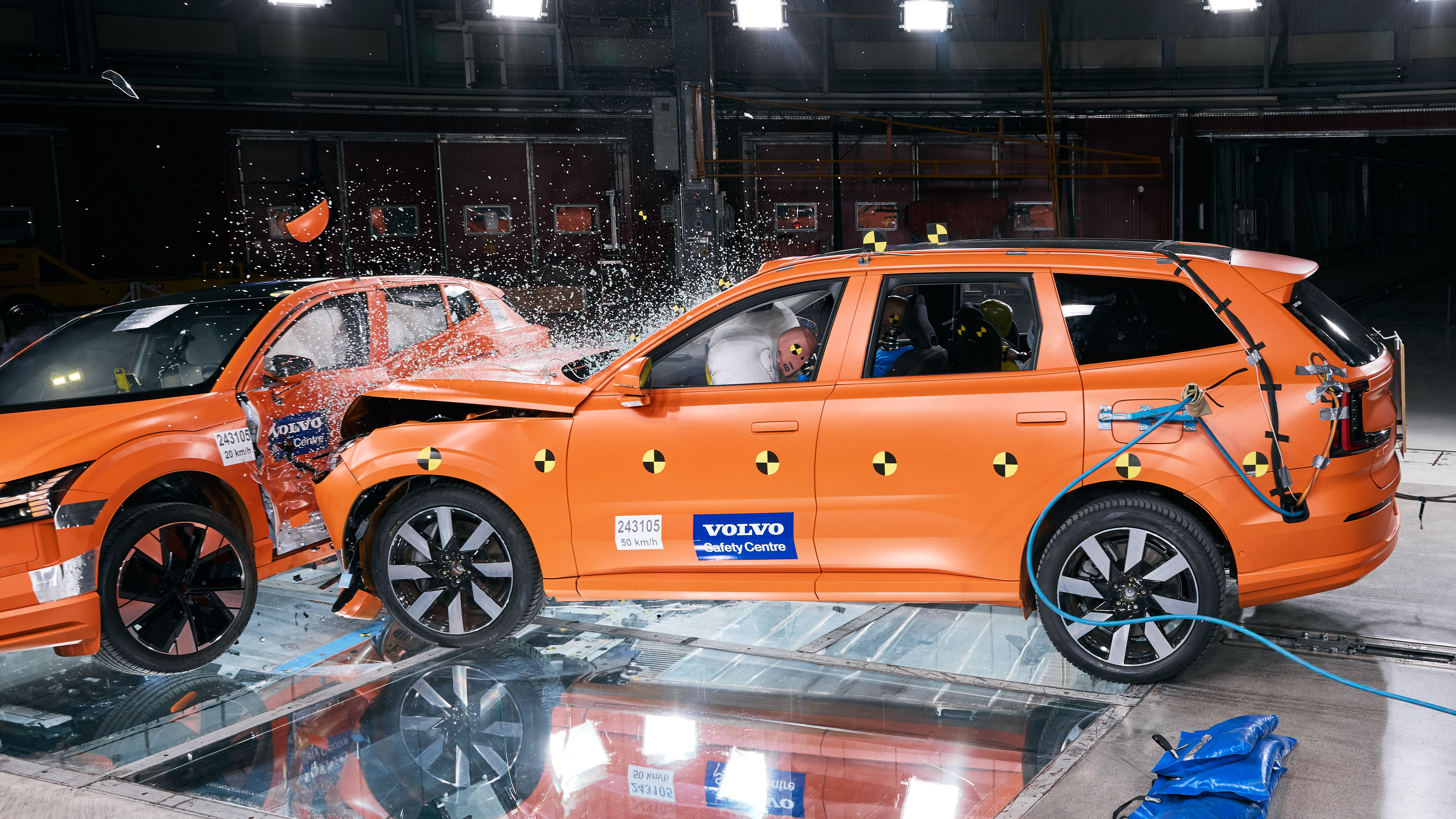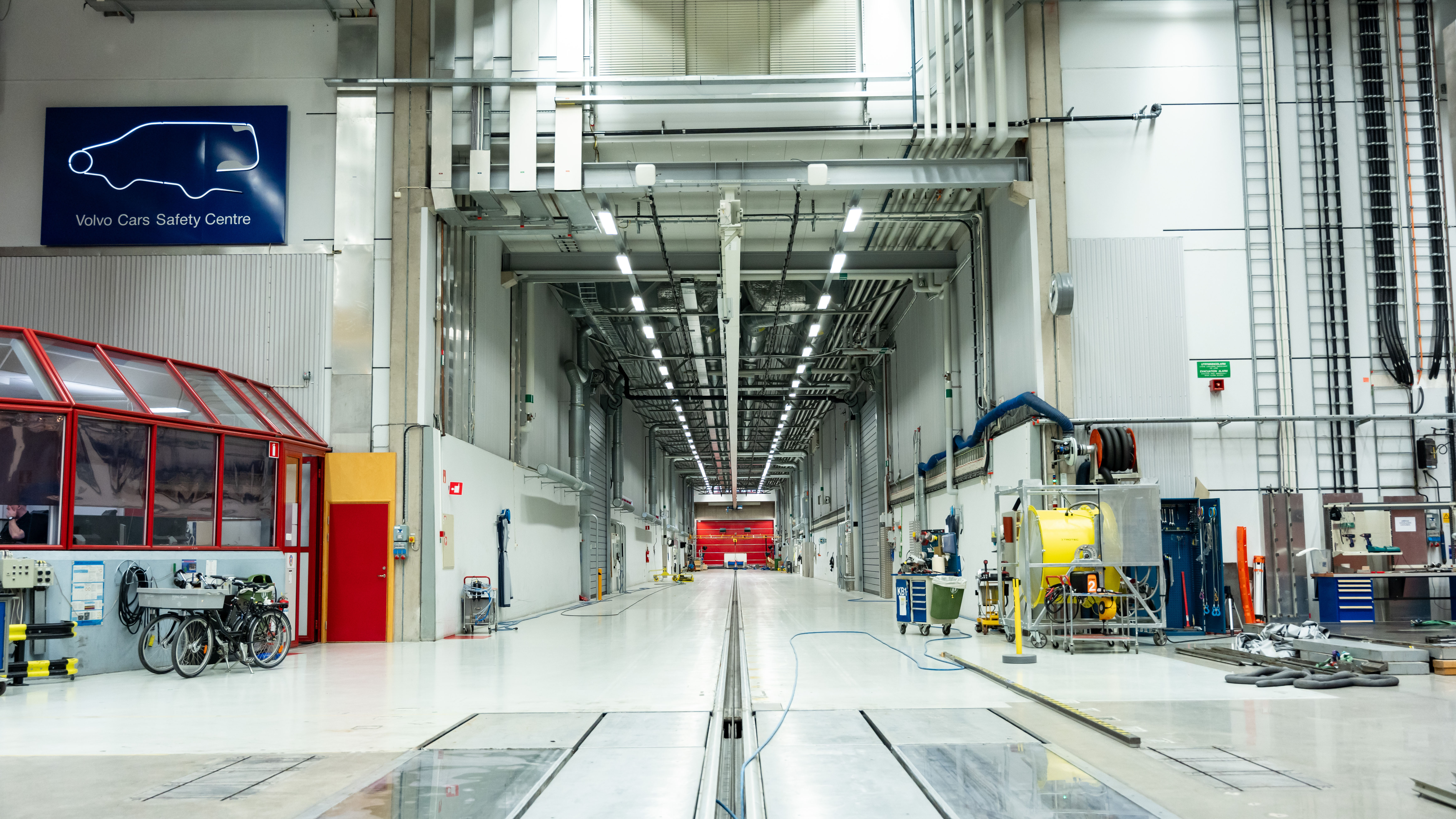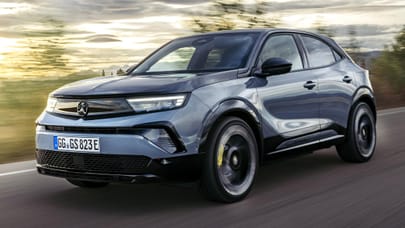
Here’s what happened when Volvo crashed an EX90 into an EX30
Five passengers spread across two vehicles travelling at different speeds: how does each fare?
We’re grateful for modern technologies, because they’ve allowed even the most basic cars to come equipped with some sort of accident avoidance systems. But what happens when systems like the automatic emergency braking or lane departure warning just... stop working?
To find out, we visited Volvo’s Crash Centre in Torslanda, Gothenburg to witness a controlled crash that mimicked a moment’s lapse in concentration at a typical suburban London junction. The chosen guinea pigs were the Swedish marque’s smallest SUV, the EX30, and its forthcoming flagship, the EX90.
The EX30 was travelling at 12mph and carried two dummies, both of whom were positioned on the same side that the EX90 was set to hit, though the bigger car would be travelling at a much faster 31mph. Three dummies were placed in the EX90, including a child in the rear Isofix seat.
Despite the relatively modest speeds both cars were travelling at, the collision was over so quickly it took us a few seconds to understand what actually happened. It really gives you a perspective of speed when there are no other objects to steer your attention away. Oh, and in case we forget: it was loud.
Once experiment Volvo Big Bang concluded and our attention snapped back into focus, we found that, amazingly, both dummies in the EX30 suffered next to no harm, despite being in what would be perceived as a serious accident. Why? Three decades’ worth of side-impact protection development, obviously.
The findings concluded that “the speed of intrusion was kept low”, and “the occupants’ interaction with the side structure was balanced and cushioned by panels and the torso airbag”. Furthermore, the inflatable curtains - a strip of airbag running along the headlining to prevent occupants from hitting their heads against the window - were deployed, enveloping the two dummies.
There was a surprising lack of damage inside. Though there were a few chinks and the odd blemish, the little EX30 stood mighty tall. And remember, this is essentially against a 2.8-tonne evolution of itself.
Speaking of which, all three of the EX90's crumple zones - lower, main and upper - were called into action to absorb most of the impact energy and reduce the load on the SUV's inner frame.
All three EX90 dummies were well shielded too; a rearward-facing position for the child seat is generally agreed to be the safest policy, while out front, the seat belts were tightened by a few millimetres upon impact, and the airbags deployed to provide further security.
So, had this been a real-world situation, all five occupants would have managed to walk away without serious injury.
Top Gear
Newsletter
Thank you for subscribing to our newsletter. Look out for your regular round-up of news, reviews and offers in your inbox.
Get all the latest news, reviews and exclusives, direct to your inbox.










